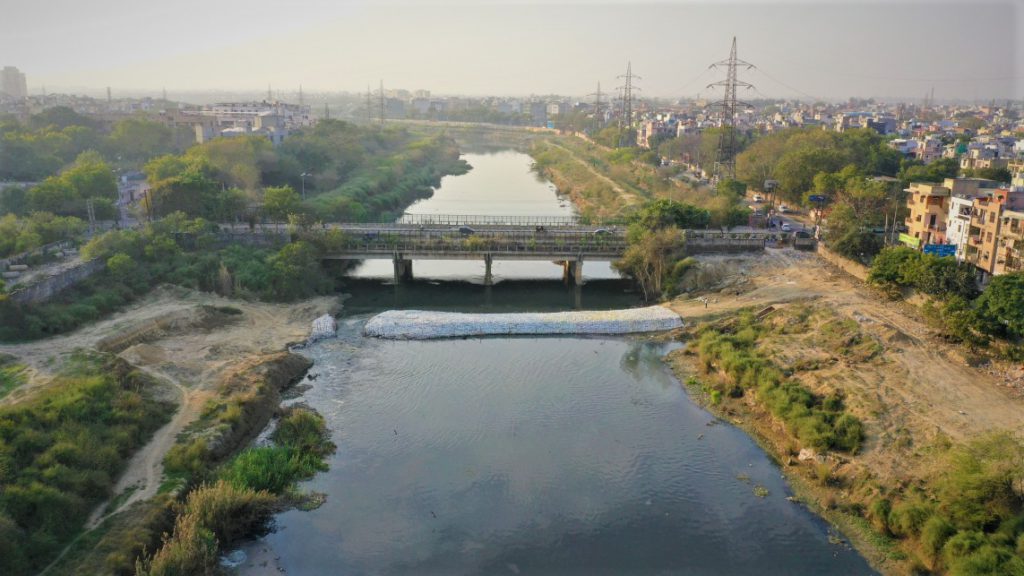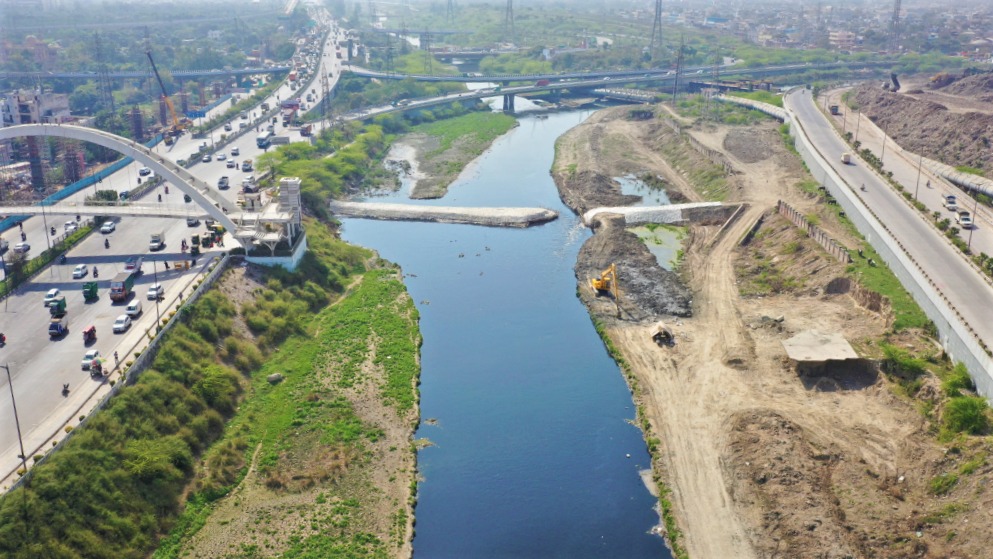Construction of temporary weirs on contributing drains of Yamuna proving to be impactful reducing pollutants
Check dams built on major drains have substantially reduced pollution levels
Cleaning the drains will directly lead us towards a clean Yamuna- Satyendar Jain


NEW DELHI:
The Kejriwal government is committed towards cleaning the Yamuna River in Delhi. To clean any big river, its drains & tributaries must be cleaned. A series of initiatives have been taken in this direction to improve the quality of the water in the drains that fall into the Yamuna. The project launched by Water Minister Shri Satyendar Jain has now started to show positive results. Temporary weirs built on major drains have substantially helped to clean the drains by improving their biochemical oxygen demand (BOD) level and decreasing the amount of other pollutants as well.
In line with the ongoing activities for cleaning Yamuna, the Irrigation & Flood Control Department of the Delhi Government is executing their plans to treat the largest polluters of the Yamuna, i.e. Najafgarh Drain & Supplementary Drain on the river stretch. Focus is being laid on solving the problem of pollution from drains directly into the Yamuna. Minister of the Irrigation & Flood Control Department, Shri Satyendar Jain said, “Cleaning the contributing drains of Yamuna will directly lead us towards cleaning the river. Construction of temporary weirs is proving to be an impactful approach to reduce the amount of pollutants contaminating the contributing drains of Yamuna”
Following the same, the Delhi government has successfully initiated the work to improve the water quality of the Najafgarh Drain and Supplementary Drain. The initiative tends to polish the Najafgarh drain that enters Delhi at Dhansa, runs about 57 km before falling into the Yamuna, and the supplementary drain, which takes off from near Kakrola Regulator and outfalls into the Najafgarh Drain.
A weir is a small barrier built across a stream or river that helps to raise the water level slightly on the upstream side. Weirs allow water to pool behind them while allowing water to flow steadily over top of the weir. Weirs are erected in the mid-flow of the drain to increase the retention of flowing water. Currently, DJB treats the wastewater of the drains falling into both the Najafgarh as well as the Supplementary drain, only by trapping it through its Interceptor Sewer Project (ISP).
Apart from this, measures that are being carried out by the Irrigation and Flood Control department include, desilting of the drains, installation of trash barriers, floating boom to trap floating solid materials, removal of municipal solid waste (MSW) and construction and demolition (C&D) waste from the drains, removal of hyacinth, garbage, patera, and other weeds, Raising and repairing of boundary walls to prevent dumping in drain land, erection of wire mesh jalies at bridges, installation of warning boards and fixing of jalies at the mouth of inlets.
Under this project, construction of 11 weirs has been completed on the Supplementary Drain and 3 weirs have been completed on the Najafgarh Drain, while work on 10 weirs is in progress. The recently constructed weirs have already started to show positive results, and thus the project is bound to turn out tremendously successful in the long run.
After implementing the above measures, the Irrigation and Flood Control Department submitted a test report about the impact of these initiatives. The test report of the drain water collected near Rithala STP, Rohini Sector 11 Weir, Rohini Sector 16 Weir, and Rohini Sector 15 Weir shows that:-
- There is a drastic reduction in suspended solids after the construction of the temporary weirs. Total suspended solids went down from 166 mg/L in Rithala to just 49 mg/L in Rohini Sector 15.
- There is a substantial reduction in ammonia content in the wastewater as tests found ammonia to be 26 mg/L in Rithala and 18 mg/L in Rohini Sector 15.
- The biochemical oxygen demand (BOD), which represents the organic material contamination, is found to be reduced after each weir. The BOD recorded in the tests was 83 mg/L near Rithala STP, which was reduced to 27 mg/L at Rohini Sector 15.
Subsequently, to boost this process administratively, the Yamuna Cleaning Cell (YCC) was constituted in November last year, under the direction of Chief Minister Shri Arvind Kejriwal, to ensure better coordination and an integrated approach to achieve the objective of Yamuna Cleaning. The cell is responsible for the execution of the Yamuna Cleaning Action Plan. The decision taken by the Cell is executed by the Members of the respective departments to ensure time-bound action.
